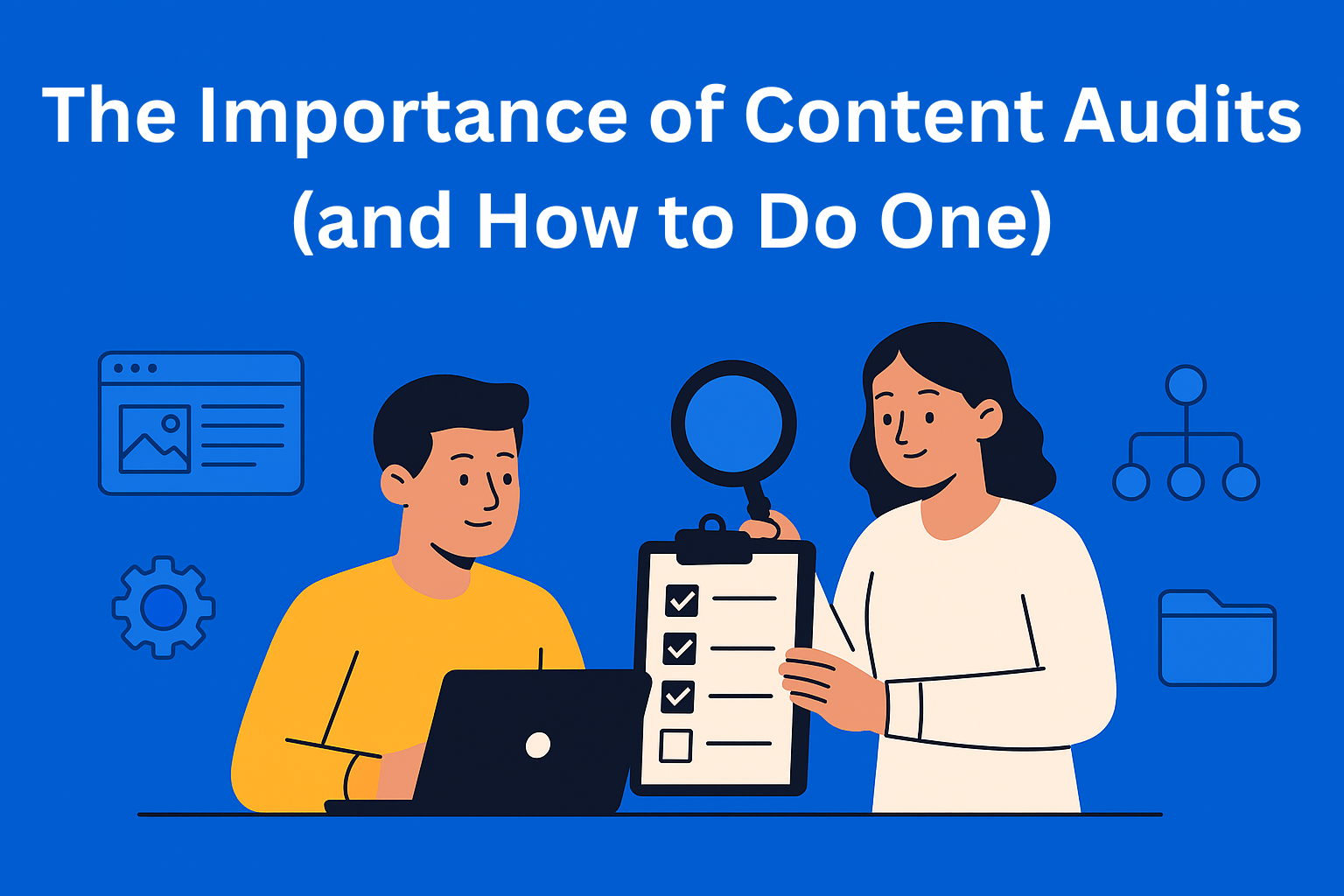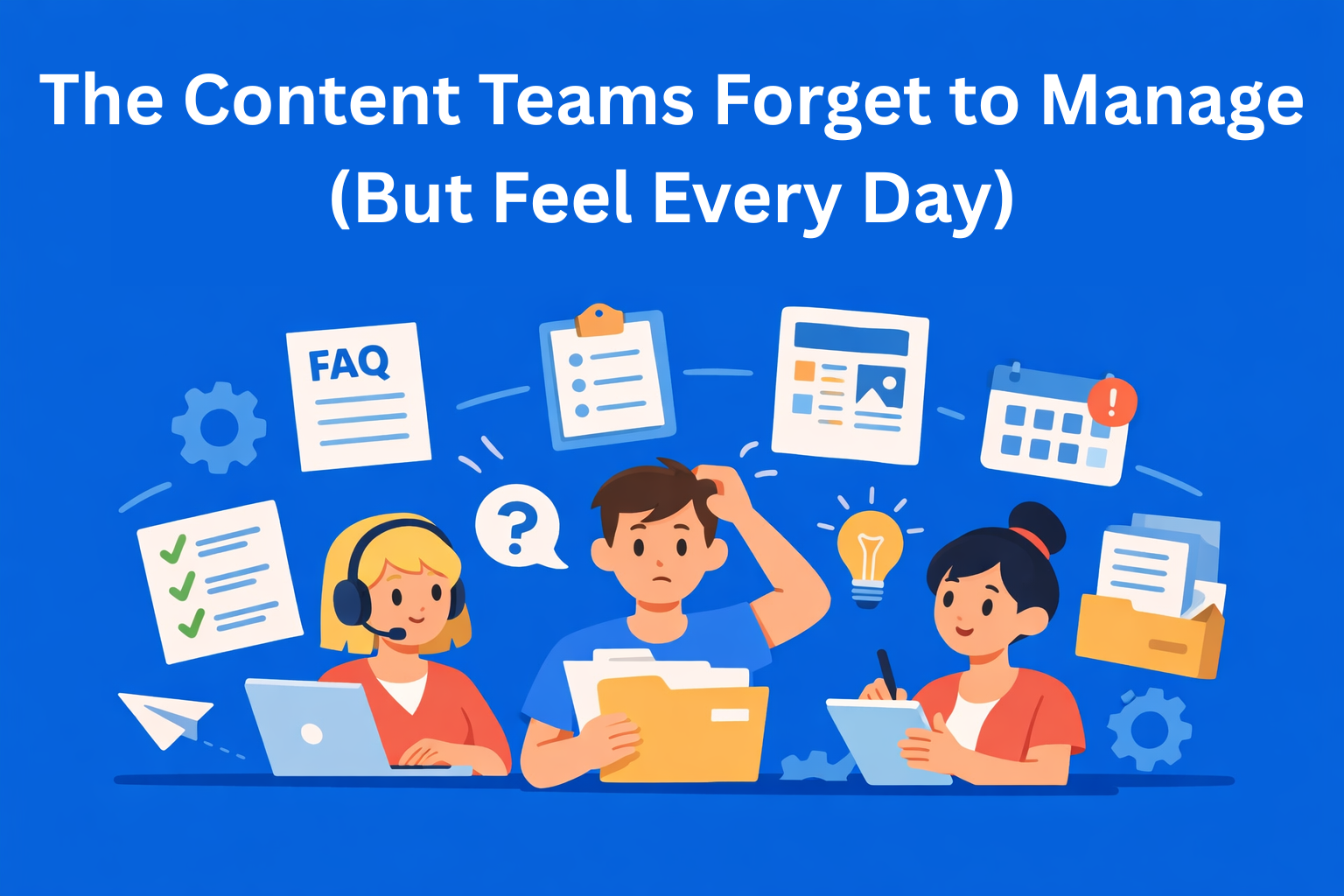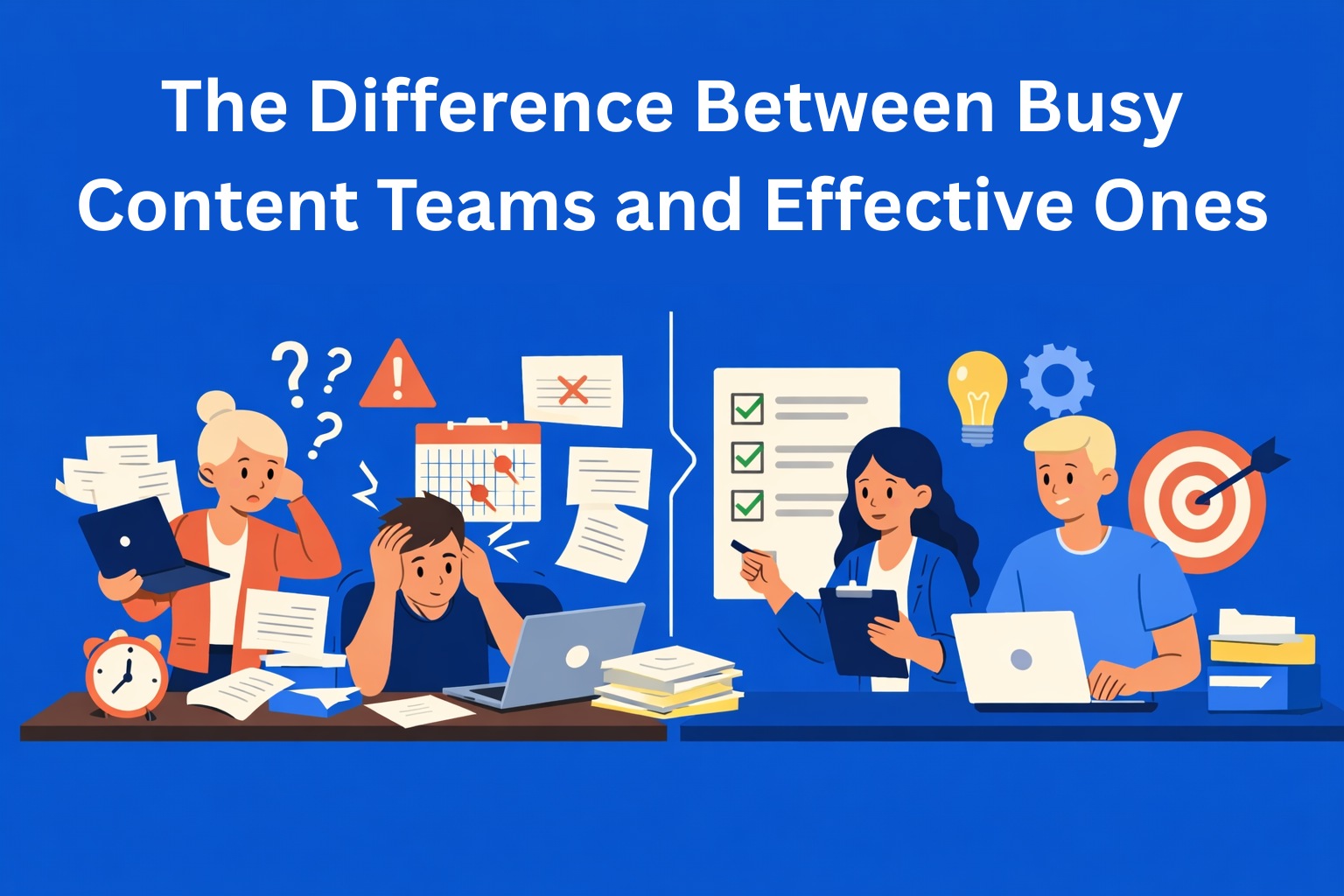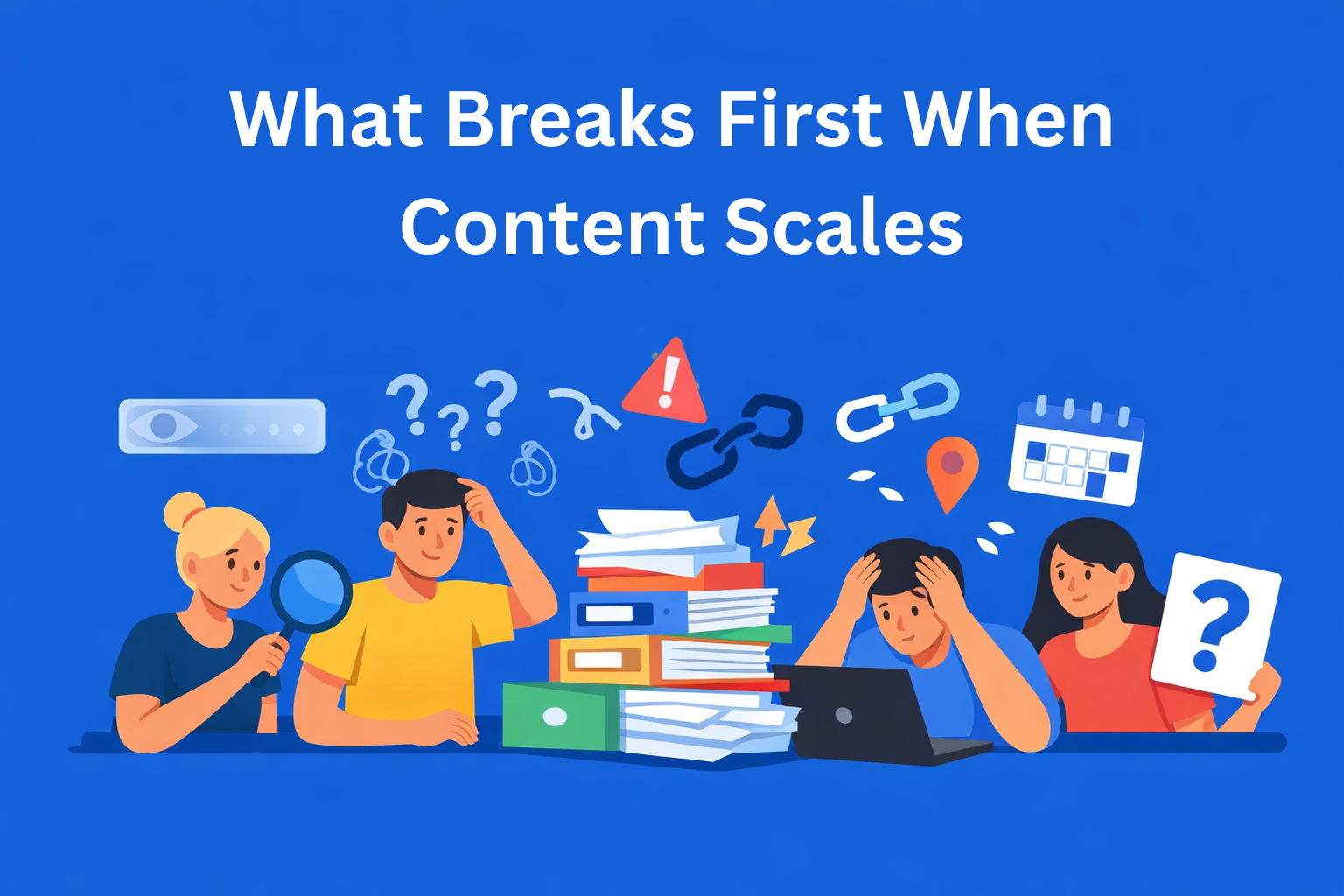The Importance of Content Audits (and How to Do One)
Learn why a content audit is essential for SEO, user experience, and brand growth. Discover simple steps to review, update, and optimize your content to boost traffic, improve rankings, and keep your website fresh and effective.

If you have a website, blog, or any kind of digital content, you’ve probably published a lot of articles, pages, and posts over time. Some of them are still useful, but others may be outdated, contain incorrect information, or simply don’t attract visitors anymore. That’s where a content audit comes in - a process where you review everything you’ve published to discover what’s worth keeping, what needs updating, and what should be removed.
A content audit is like spring cleaning for your website. It helps you understand what works well and what doesn’t. The goal is to improve the quality of your content, SEO performance, and user experience. When your content is fresh, relevant, and organized, your website attracts more visitors and ranks better on search engines.
Key Takeaways
- Content audits improve SEO and UX - Regular audits help you update outdated pages, remove low-value content, and boost performance.
- Start small and focus - A partial audit (like just your blog section) is a great first step for beginners or smaller teams.
- Use data, not guesses - Leverage tools like Google Analytics, Search Console, or Ahrefs to track traffic, rankings, and engagement.
- Audit actions: keep, update, merge, delete - Categorizing content gives you a clear roadmap to improve and scale your strategy.
- Make it a habit, not a one-off - Schedule audits at least twice a year to maintain relevance, consistency, and competitive advantage.
Why a Content Audit Is Important
A content audit has many benefits, but the three main ones are improving SEO, enhancing user experience, and strengthening your brand. When you analyze your content, you can identify old blog posts that no longer bring traffic or pages that have potential but are poorly optimized.
For example, maybe you have an article that used to be popular, but the information in it is now outdated. Instead of deleting it, you can refresh it with new data, visuals, and relevant SEO keywords.
Regular content audits also help maintain a consistent tone and writing style. If you have multiple authors, it’s easy for the brand voice to vary from post to post. An audit helps you align everything so readers always recognize your brand.
Finally, an audit can uncover low-performing pages that just take up space without contributing to traffic or conversions. Removing such pages improves your site’s speed and allows you to focus your energy on what truly delivers results.
Types of Content Audits
There are several types of content audits, depending on your goal:
- Full-scale audit - a detailed review of your entire website. It’s used when you want a complete picture of your content.
- Partial audit - focuses on a specific section of your site, such as the blog or landing pages.
- SEO-focused audit - analyzes factors like keywords, meta descriptions, titles, and links.
- UX-focused audit - looks at structure, design, and how easy your site is to use.
If you’re a beginner, it’s best to start with a partial content audit and focus on your most-visited or most important pages.
How to Perform a Content Audit (Step by Step)
1. Collect All Your Content
The first step is to make a list of everything you have. You can use tools like Screaming Frog, Ahrefs, or simply export your website’s sitemap. Put everything into an Excel or Google Sheets file, including details like the title, URL, publish date, content type, and basic performance metrics.
2. Analyze the Metrics
Next, look at how each piece of content performs. Tools like Google Analytics and Google Search Console are your best friends here. Check metrics such as:
- Number of visits
- Average time on page
- Bounce rate
- Number of backlinks
These insights show which articles attract readers and which ones don’t. If a post has good traffic but poor conversions, it might need a stronger call to action. If it gets few visits but has valuable content, it may just need better SEO optimization.
3. Evaluate Quality and Relevance
The next step in a content audit is to assess how useful and up-to-date your content is. Ask yourself questions like:
- Is this information still accurate?
- Does it provide real value to the reader?
- Does it contain outdated data or broken links?
If the answers are negative, it’s time to refresh it. Add new insights, visuals, videos, or practical examples. This makes your post more engaging and increases the chance that readers will share or recommend it.
4. Mark Actions to Take
Now comes the most important part: deciding what to do with each piece of content. The four most common labels are:
- Keep - content that performs well and doesn’t need changes.
- Update - posts that have potential but need some polishing.
- Merge - overlapping pieces that can be combined into one stronger post.
- Delete - irrelevant or outdated pages.
Once everything is categorized, you’ll have a clear picture of where to focus your time and effort.
5. Implement Changes and Track Results
The final step in a content audit is making improvements and tracking outcomes. Update titles, add keywords, refresh images, and fix links. After a few weeks, check if your search rankings have improved and if your traffic has increased.
It’s essential to understand that a content audit shouldn’t be done just once. Make it a regular habit - at least twice a year. That’s the best way to keep your content high-quality and competitive.
Tools That Can Help
You don’t have to be an expert to do a solid content audit. A few simple tools can make the process much easier:
- Google Analytics - a simple tool that shows how many people visit your site, where they come from, and which pages they look at most. For example, you can see whether more traffic comes from social media or Google searches, helping you decide where to focus more effort.
- Google Search Console - shows you what words people type in search engines to find your site. It helps you understand which topics attract visitors and which pages rank best.
- Ahrefs / SEMrush - advanced tools that analyze how your content performs compared to competitors. They show which keywords other sites use, how many backlinks you have, and where you can improve your SEO.
- Screaming Frog - a tool that scans your entire website and detects technical issues like broken links, duplicate titles, or missing meta descriptions. It’s like a health check for your site, revealing small “bugs” that need fixing.
- Notion or EasyContent - simple organizational tools. You can use them to create a table with all your pages, add notes, track statuses, and plan updates. They help you keep all audit information in one place so you always know what’s done and what still needs work.
By combining these tools, you can easily track changes and make decisions based on data rather than guesses.
Common Mistakes to Avoid
When doing a content audit, many people make the same common mistakes:
- Focusing only on SEO metrics - while they’re important, don’t forget about the user experience.
- Lack of documentation - if you don’t record what you’ve done, it’s hard to measure progress.
- Irregular scheduling - a content audit shouldn’t be a one-time thing but a continuous process.
- Ignoring brand goals - your audit should align with your broader marketing strategy.
Avoiding these mistakes will make your content audit much more effective.
Conclusion
In the end, a content audit isn’t just an analysis - it’s a growth tool. It helps you understand what your audience loves, what needs improvement, and where to direct your energy. Instead of constantly creating new content, you can improve what you already have, saving both time and money.
When you perform content audits regularly, your website becomes faster, your content stronger, and your audience happier. That leads to better Google rankings, more trust from users, and higher conversions.
So don’t wait. Review your content, analyze it, refresh it, and optimize it. The better your content is, the greater your online success will be.






